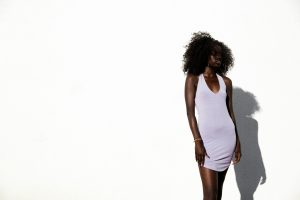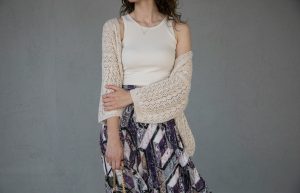Advanced Biomimetic Fashion Interfaces Inspired by Natural Systems
In recent years, the fashion industry has been increasingly adopting biomimicry, a design approach that takes inspiration from natural systems to create innovative and sustainable solutions. Advanced biomimetic fashion interfaces are the latest trend in this field, pushing the boundaries of conventional fashion interfaces and leading the industry towards a more eco-friendly and efficient direction. Drawing inspiration from various aspects of nature, these interfaces not only offer a new level of functionality but also showcase the beauty and complexity of natural systems. Let’s explore the world of advanced biomimetic fashion interfaces and see how they are revolutionizing the way we interact with fashion.
The Concept of Biomimetic Fashion Interfaces
Biomimicry is a design philosophy that imitates nature’s systems and processes to solve human problems. It is based on the premise that millions of years of evolution have created efficient and sustainable solutions to various challenges, and we can learn and apply these principles to our own designs. Biomimetic fashion interfaces are created by taking inspiration from nature’s forms, patterns, and behaviors and incorporating them into fashion technology, creating a harmonious relationship between fashion and the natural world.
Examples of Advanced Biomimetic Fashion Interfaces
Nature has been a constant source of inspiration for designers, but with advanced biomimetic fashion interfaces, the possibilities are endless. Here are some notable examples that showcase the potential of this emerging field:
Insect-Inspired Fabric
Scientists at the University of Cambridge have developed a fabric that mimics the unique defense mechanism of insects. The fabric is made up of tiny fibers that move and toughen up when exposed to heat, just like how an insect can shed its outer layer and reveal a harder, protective layer underneath. This fabric has potential applications in protective clothing and could potentially replace heavy and bulky gear currently used by firefighters and soldiers.
Color-Changing Fabric
Inspired by chameleons, a team of researchers at MIT has developed a fabric that can change color in response to the surroundings. This fabric uses tiny photonic crystals that change the wavelength of light reflected when exposed to different temperatures. This technology has potential applications in fashion, from creating color-changing clothing to temperature-sensitive designs.
Self-Healing Materials
Scientists at the University of Bristol have developed a self-healing material inspired by mussel byssus, the adhesive protein fibers that mussels use to attach to rocks. The material is similar to a hydrogel that can repair itself when damaged, making it a sustainable alternative to traditional synthetic fibers. This material could have major implications for the fashion industry, reducing waste and extending the lifespan of clothing.
The Benefits of Advanced Biomimetic Fashion Interfaces
Aside from the undeniable aesthetic appeal and potential for innovative designs, advanced biomimetic fashion interfaces offer several benefits that make them a game-changer for the fashion industry.
Eco-Friendly
By drawing inspiration from nature, biomimetic fashion interfaces promote environmental sustainability. The use of natural materials and processes in manufacturing not only reduces the environmental impact but also reduces the use of harmful chemicals and non-biodegradable materials.
Efficient and Functional
Nature has evolved the most efficient and functional solutions to various challenges, and biomimetic fashion interfaces incorporate these principles into their designs. This makes them not only environmentally friendly but also more efficient and functional compared to traditional fashion interfaces.
Endless Design Possibilities
Nature offers an infinite source of inspiration, and with biomimetic fashion interfaces, designers can push the boundaries and create truly unique and innovative designs. This opens up endless design possibilities and allows for the creation of clothing that responds to human needs and the environment.
Challenges and the Future of Advanced Biomimetic Fashion Interfaces
While advanced biomimetic fashion interfaces offer significant advantages, there are also some challenges that need to be addressed. These include the cost of production, limitations in mass production, and the ethical implications of using natural materials for fashion purposes.
Despite these challenges, the future looks promising for biomimetic fashion interfaces. As technology evolves and the demand for sustainable fashion increases, we can expect to see more innovative and eco-friendly designs inspired by nature. Advanced biomimicry fashion interfaces have the potential to revolutionize the way we interact with clothing, making fashion not just sustainable but also meaningful and connected to the natural world.
In conclusion, advanced biomimetic fashion interfaces are a testament to the power of nature and the potential for sustainable and innovative design solutions. These interfaces are not just a trend but a step towards a more sustainable and connected future where fashion is in harmony with nature.










